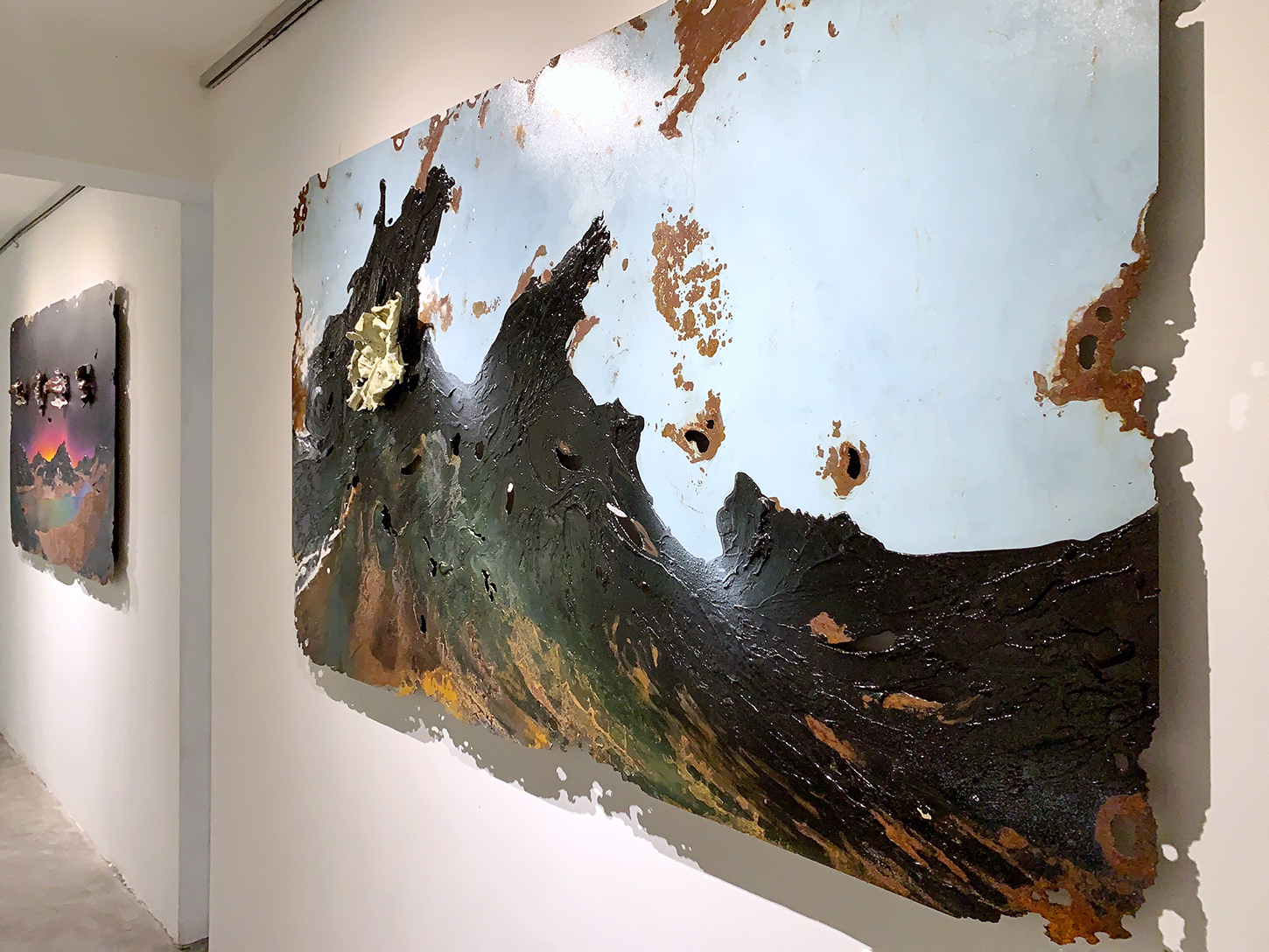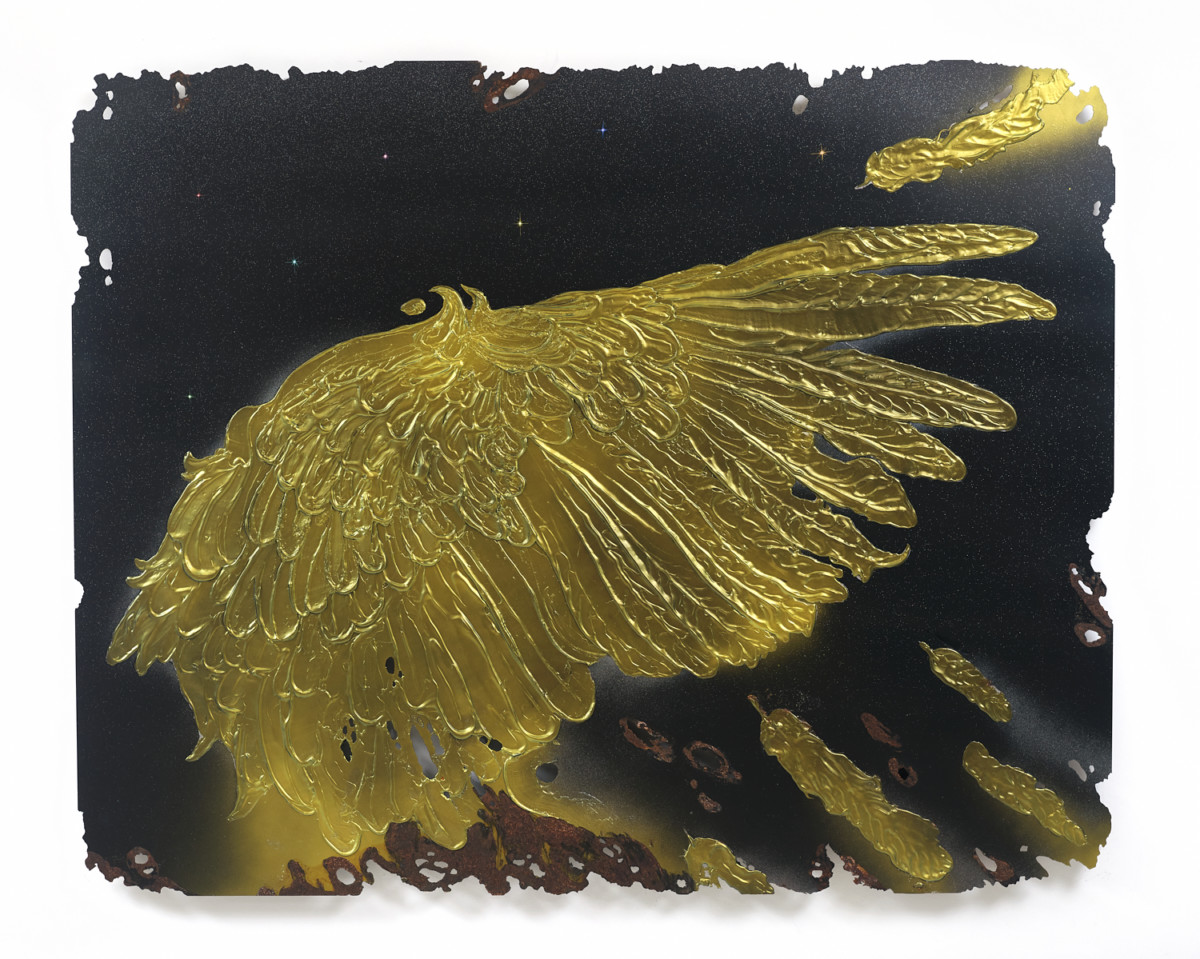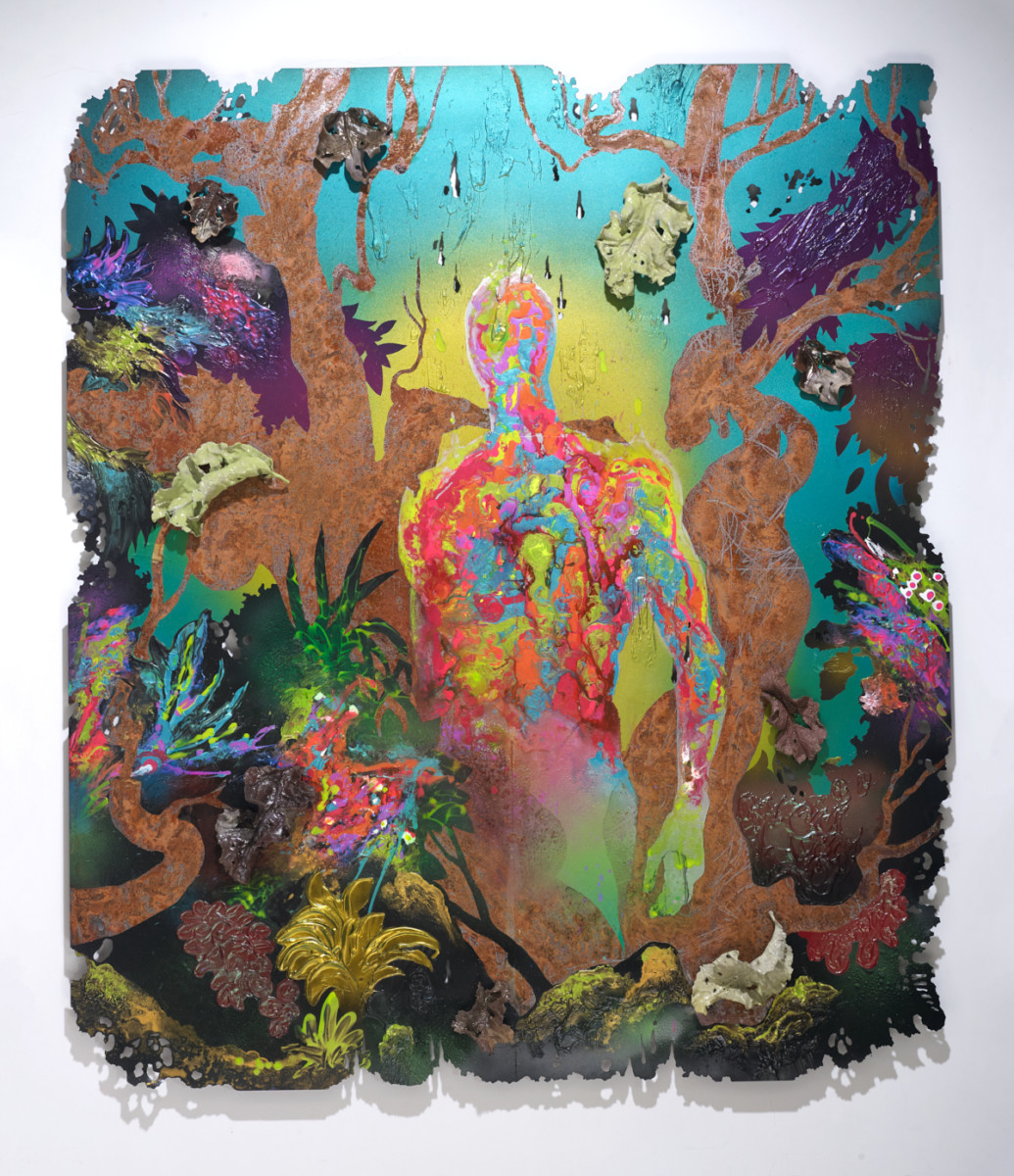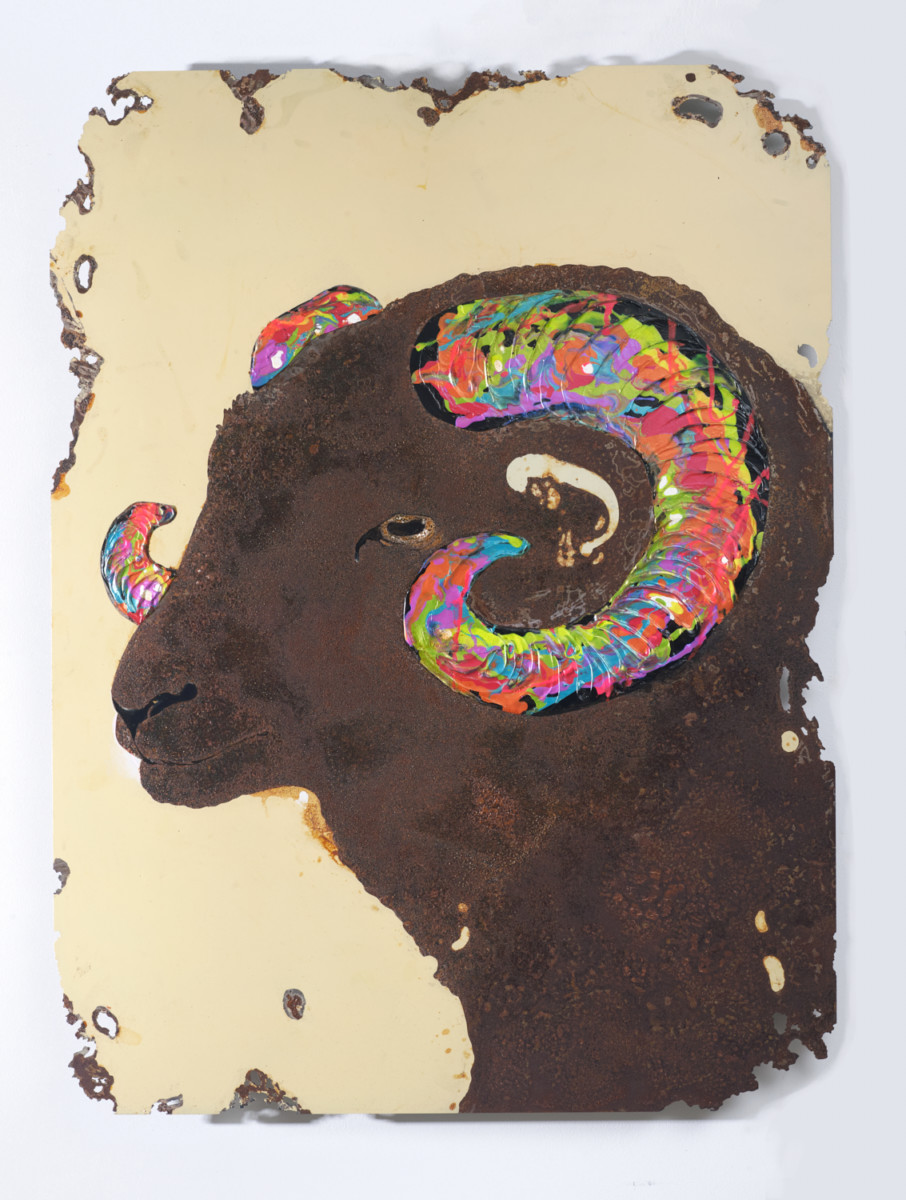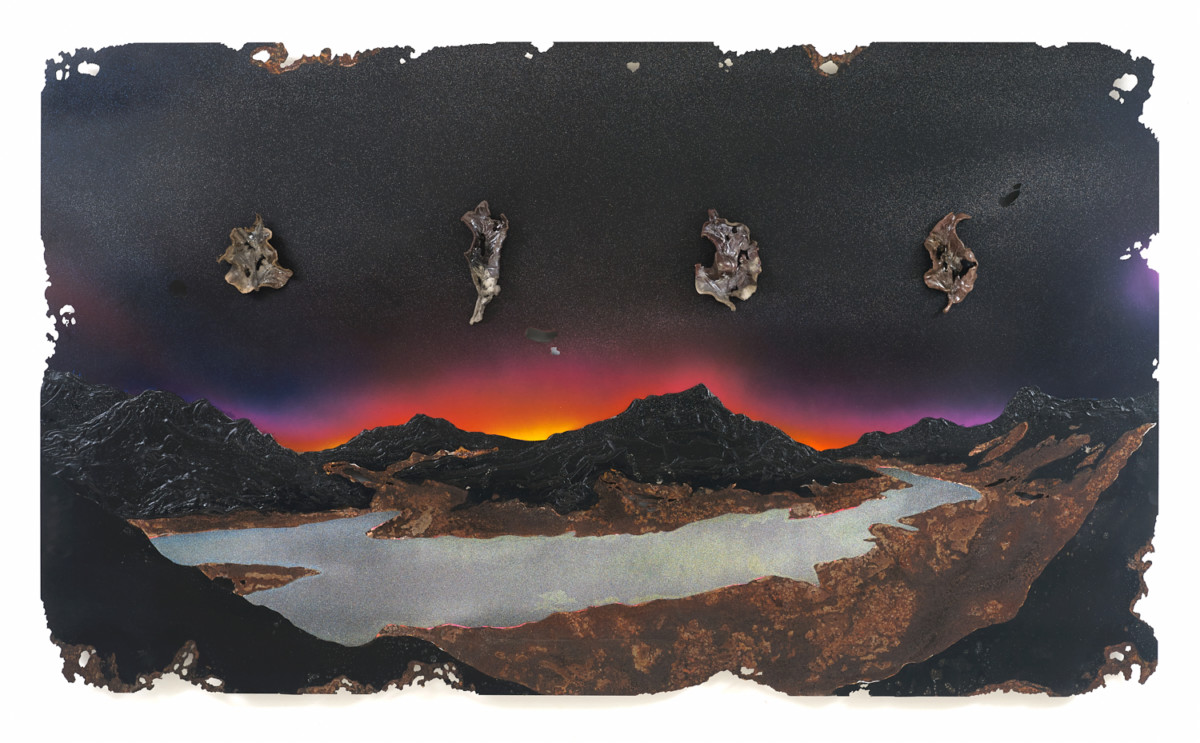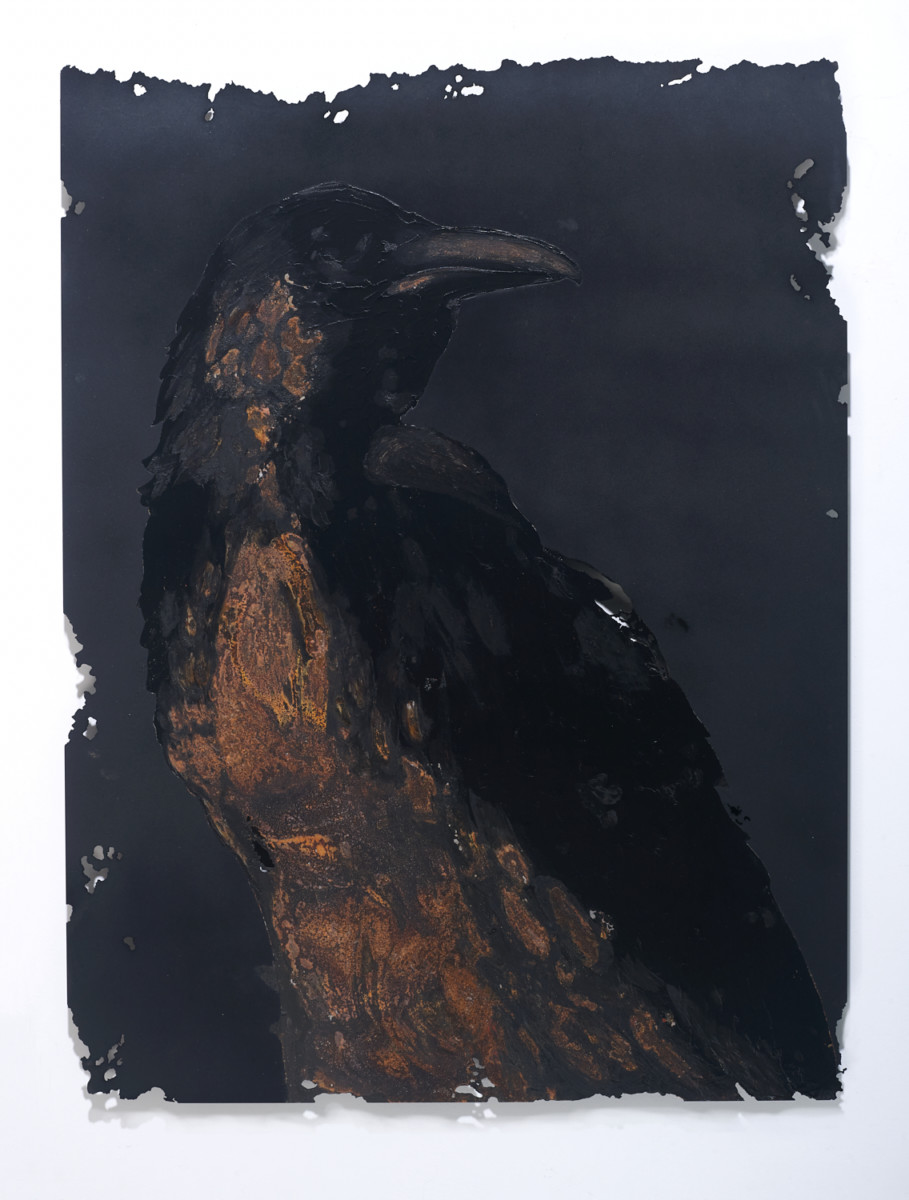Covenant
Solo Exhibition:-
Haafiz Shahimi
19th April – 10th May 2022
Core Design Gallery, Subang Jaya
*Click on images to zoom in
P R E F A C E
Abrahamic religions are commonly known as consisting of three major religions in the world, namely Islam, Christianity and Judaism. Religious scholars and researchers would have added that there are more religions prescribed as Abrahamic, but for this exhibition’s sake, we are narrowing it down to these three, as it is acknowledged the most.
Historically, Abrahamic religions are believed as having a huge role in shaping mankind into what we are today. Various texts and interpretations are discussed among the non-religious and religious practitioners and many have conceded that similarities found in these religions pointed back to the prophet Abraham. The prophet has been mentioned timelessly as a key figure throughout these religions’ history — a link that denominates clear influence narrated comprehensively according to the respective faiths. There is also mutual agreement on certain accounts about Abraham — to which traditions have either extrapolate or set in stone. Regardless, beliefs are specific to one’s nature when one’s sought for guidance.
Covenant is an exhibition that seeks a common ground of understanding between these religions — when Haafiz Shahimi first came up with the idea of Covenant, he had meant it as a learning curve as a Muslim in search of truth. In a role that suits a changing man, this exhibition would mark Haafiz’s turning point as an artist.
During the years of working with Haafiz Shahimi, the gallery had understood his inclination to tread through phases of experimentation when it comes to art-making while at the same time, cataloguing his progress towards new artistic achievements. Having said that, in the past months the gallery had resolutely encouraged him to commit to the said idea that would reflect on the holy month of Ramadhan — as a gesture that connects to his first intent on what Covenant as an exhibition would entail.
I N T R O D U C T I O N
In this postmodern world, vigorous and unyielding as it is, stories of the prophets perhaps in some instances felt like fables — fictitious, extraordinary tales that urge oneself to look into and structure their lives towards leading a moral and ethical way of living, as all fables tend to do. There is advice to listen to, restrictions and regulations to follow, consequences to heed, and it all ended in the same way — as a lesson by which to increase knowledge as well as experience.
Initially, Covenant begins with a studious reflection on the thousands of years of Islamic history — a devotional interest prompted by learning and understanding the roots of mankind’s uninhibited predilections based on the well-known theological and prophetical evidence, particularly in the stories of the prophets (or Qiṣaṣ al-Anbiyā’ in Arabic) as written/mentioned in the Quran, in addition with the deliverance of authentic hadiths alongside it.
Covenant, as a quick google search defined it, is known as a religious contractual pact made between God and his creations that asserts an inherent understanding of the origin of man1. According to the Islamic perspective, this inherent understanding is called fitra — a state in which man’s inner conscience is presupposed, or predestined with an intrinsic belief in the existence of God since before the creation of the heavens and the earth itself. The recognition of this fitra was also believed to be revived in an unknown place whereupon God assembled all of His creations and proceeded with a question, stated in the verse below:
And ˹remember˺ when your Lord brought forth from the loins of the children of Adam their descendants and had them testify regarding themselves. ˹Allah asked,˺ “Am I not your Lord?” They replied, “Yes, You are! We testify.” ˹He cautioned,˺ “Now you have no right to say on Judgment Day, ‘We were not ware of this.’
Al – A’raf, 7:172
The verse insinuated a state in which mankind has since then, without a doubt, forgotten said declaration. This declaration soon further demonstrates mankind has always been forgetful and is always urged, incessantly in the Quran, to recall and remember their fitra; to acknowledge the existence of God and proclaim that He is One and indivisible. This particular proclamation was taught and preached by the prophets throughout the generations since the creation of Adam. So when we talk about the origin of man, it is not per se about the creation of the first human being, but of the first recognition of this embedded fitra in all of the creations.
To convey the absolute oneness of God’s existence for a Muslim is the highest priority. Stories of the prophets, time and again, relentlessly were about emphasising said conviction. Haafiz Shahimi comes in with the intent to visually interpret the moral teachings and wisdom that has been told in Qiṣaṣ al-Anbiyā’ and that he has learned during various circumstances and stages throughout his life — some of which with differing opinions that while he felt it is neither blasphemous nor doubtful, the stories are still encouraged to learn with open minds and interpretations.
It is the intellectual pursuit of the unseen told in these stories that as a Muslim, has become obligatory to Haafiz. To establish scenes of the prophets that are not allowed to be visualised in any way or form, resourcefulness takes place. Coincidentally, his recent endeavour in exploring and utilising industrial mediums2, which are metal and clay, is closely connected with the creation of mankind.
Metal is a type of iron that is widely used today and is the only otherworldly element that is mentioned in the Quran in a chapter titled Al – Hadid (The Iron). It is an element that is sent down by way of the Divine’s will so that it may help mankind prosper. Haafiz’s choice of medium for Covenant largely depends on the metal itself, as he manipulates said material to convey a deeper message of its malleability properties. By how the Quran emphasised that mankind will make use of iron to sustain their lives, so did Haafiz recontextualise the material into an understanding that man could not have flourished without it.
In Haafiz’s decisiveness, using metal became an essential aspect of learning and acknowledging that part of humans’ livelihood is rooted at the core of God’s will. It is crucial to understand that the point of correlation here is the fact that iron does not belong to the earth. Similarly, the prophet Adam was not created with beginning his life on earth, although he was made from clay that belongs to the earth. Only later when he was destined to sin that he was sent down to earth. The silver lining here, then, is regarded among Muslims as a purposeful will of God — to lead a life on earth until the end of Time, to which God, with His mercy, sent down iron as a source of human development and progress.
Without a doubt, it is the start of curiosity about the mysticism of existence that is truly brought about in Haafiz’s research, expelled and extracted through readings on the stories of the prophets. Not only Haafiz is imploring on the origin of man, but how it was intriguingly revealed to and preached by the prophets. He set forth with using the materials to develop a chronological series of famous events in the course of Islamic history that were experienced by the prophets, which were narrated in the Quran as well as diligently interpreted by Islamic scholars.
It is a persuasive attempt by Haafiz to ‘theorise’ how the miracles and pearls of wisdom in these stories might have been perceived then while bridging our current contemporary mindset to it. Coming from an artist who has played with fire and smoke and now to iron and clay, it is undeniably an effort born of enthusiasm and inquisitiveness.
Covenant is a showcase of a series of works that concentrate on the stories of the Islamic prophets, an amalgamation of symbolic reinterpretations into a contemporary art form. It beseeches a deeper look into its significant usage of metal and clay as a harmonisation factor in regards to the materiality that relates to the existence of humankind.





